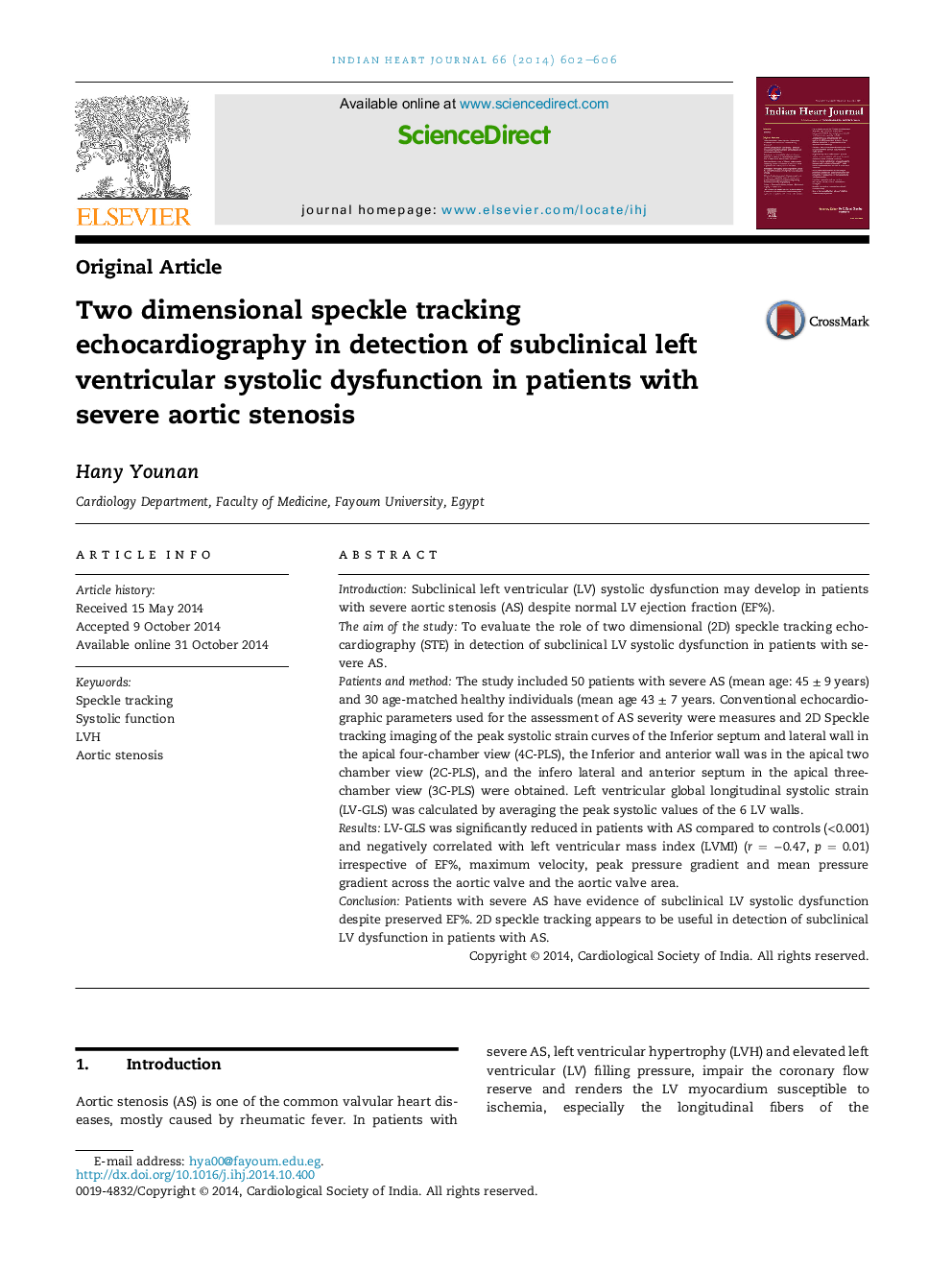| Article ID | Journal | Published Year | Pages | File Type |
|---|---|---|---|---|
| 5962005 | Indian Heart Journal | 2014 | 5 Pages |
IntroductionSubclinical left ventricular (LV) systolic dysfunction may develop in patients with severe aortic stenosis (AS) despite normal LV ejection fraction (EF%).The aim of the studyTo evaluate the role of two dimensional (2D) speckle tracking echocardiography (STE) in detection of subclinical LV systolic dysfunction in patients with severe AS.Patients and methodThe study included 50 patients with severe AS (mean age: 45 ± 9 years) and 30 age-matched healthy individuals (mean age 43 ± 7 years. Conventional echocardiographic parameters used for the assessment of AS severity were measures and 2D Speckle tracking imaging of the peak systolic strain curves of the Inferior septum and lateral wall in the apical four-chamber view (4C-PLS), the Inferior and anterior wall was in the apical two chamber view (2C-PLS), and the infero lateral and anterior septum in the apical three-chamber view (3C-PLS) were obtained. Left ventricular global longitudinal systolic strain (LV-GLS) was calculated by averaging the peak systolic values of the 6 LV walls.ResultsLV-GLS was significantly reduced in patients with AS compared to controls (<0.001) and negatively correlated with left ventricular mass index (LVMI) (r = â0.47, p = 0.01) irrespective of EF%, maximum velocity, peak pressure gradient and mean pressure gradient across the aortic valve and the aortic valve area.ConclusionPatients with severe AS have evidence of subclinical LV systolic dysfunction despite preserved EF%. 2D speckle tracking appears to be useful in detection of subclinical LV dysfunction in patients with AS.
